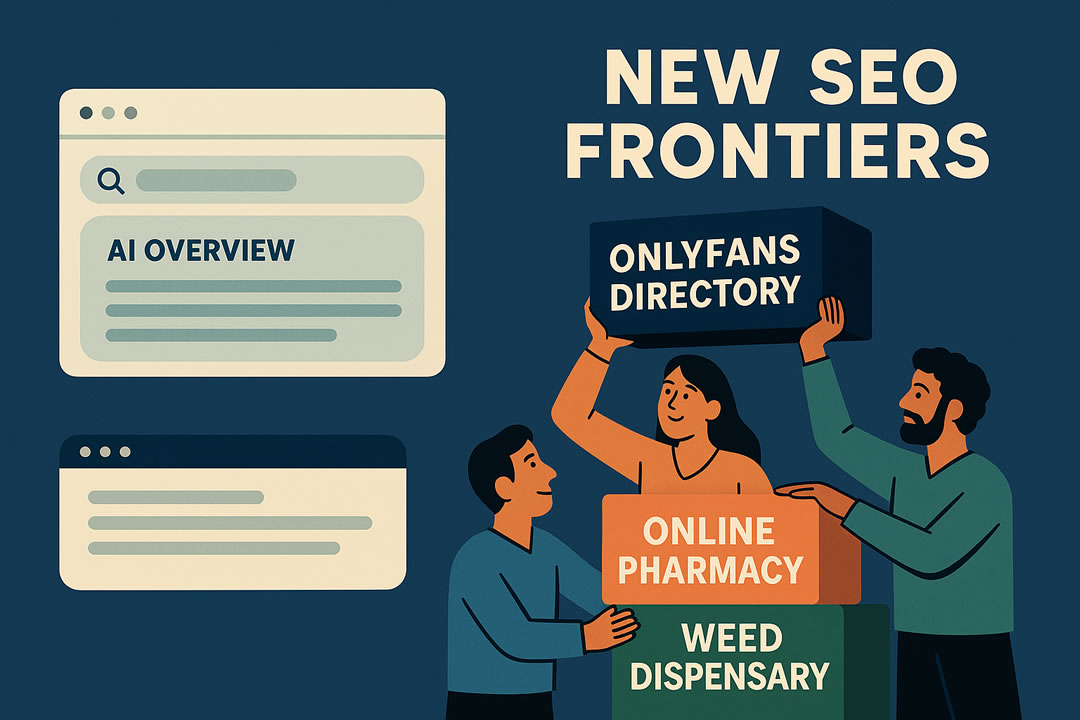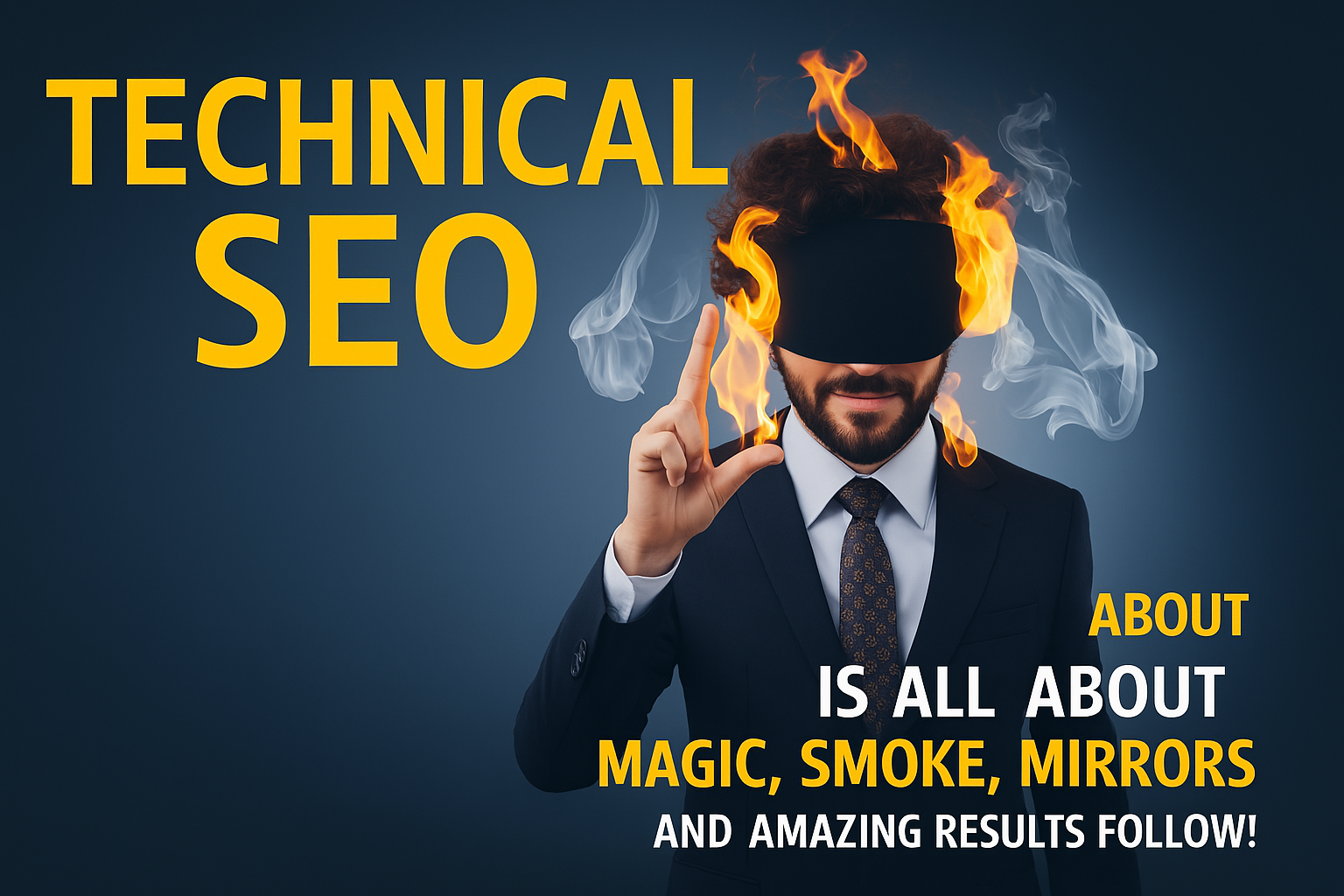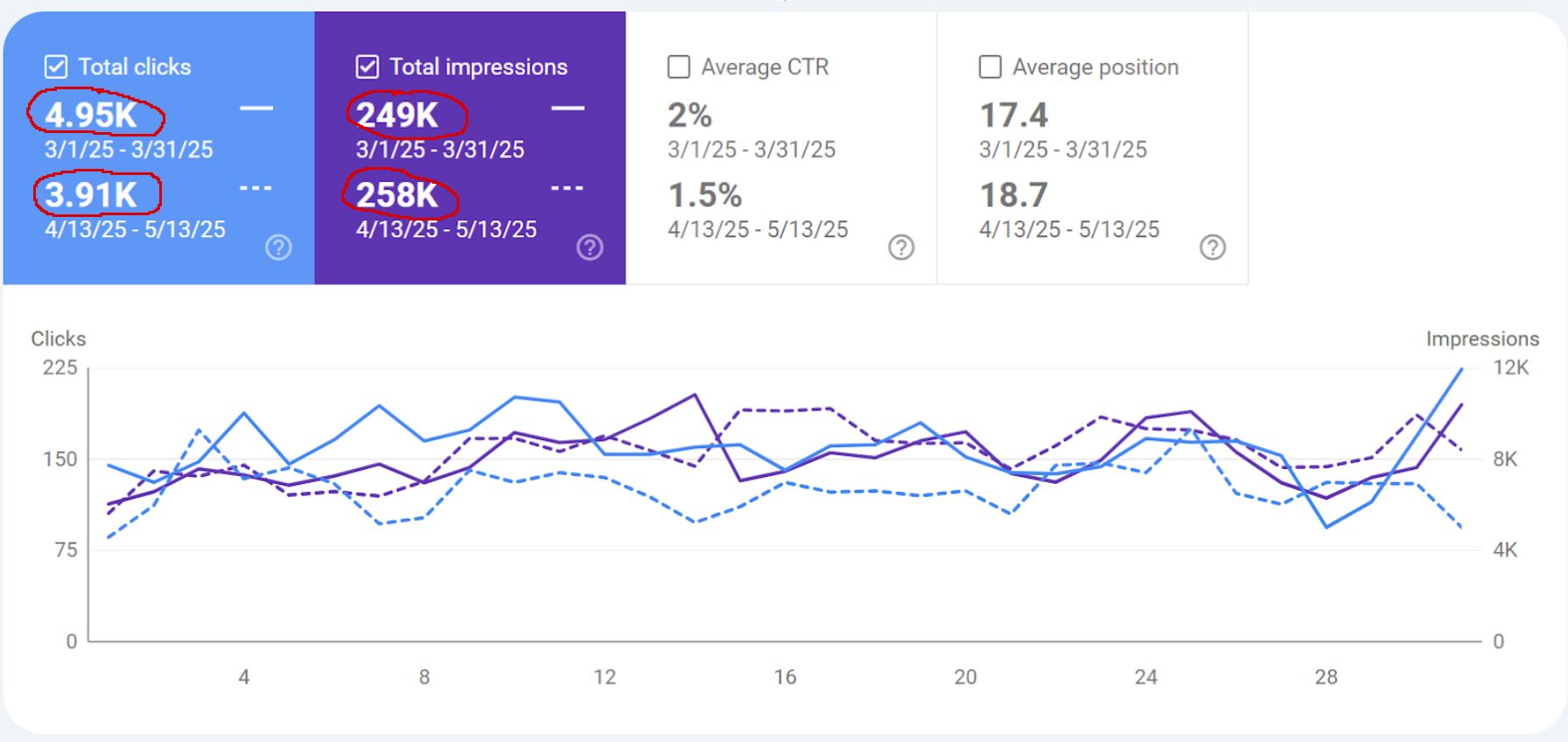
AI Up, CTR Down: Why Google’s New Answer Boxes Are Squeezing Traditional SEO
TL;DR — 12 months after Google rolled out AI Overviews (AIO), the average site is keeping or even gaining impressions, but losing up to 30 % of organic clicks. Searchers see the AI summary, feel they have enough, and never reach the blue links. For publishers who rely on traffic-for-revenue, that’s a body-blow.
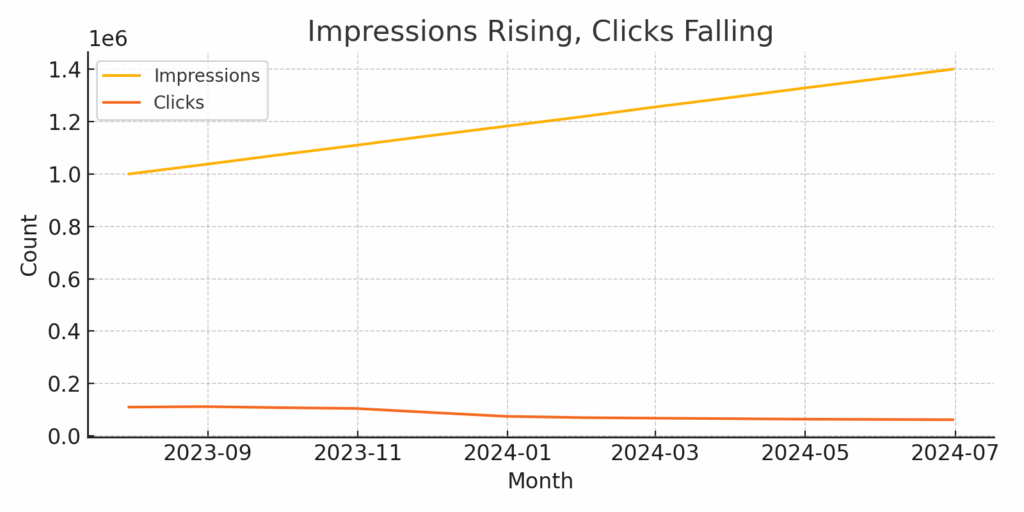
What the independent crawlers are recording
- BrightEdge now finds AIO in 11 % of all US queries and in 37 % of queries ≥ 6 words. Impressions are up 49 % YoY, clicks down 30 %. :contentReference[oaicite:0]{index=0}
- SISTRIX heat-map studies show the first eye-tracking “fixation” has moved from position 1 to the AIO panel 73 % of the time. :contentReference[oaicite:1]{index=1}
- FirstPageSage’s positional CTR curve flattened: position 1 fell from 39 % to 28 %, and position 3 fell from 11 % to 7 %. :contentReference[oaicite:2]{index=2}
Why impressions can rise while clicks tank
- Answer sufficiency: AIO resolves informational intent in-panel; users only click when they hit a dead end (more profound research, commerce, or experiential content).
- Above-the-fold real-estate: AIO + ads can push the first organic result 1.5–2 screens down on mobile.
- Zero-click habituation: Featured snippets trained users to trust SERP answers; AIO amplifies it because language is conversational, not snippet driven.
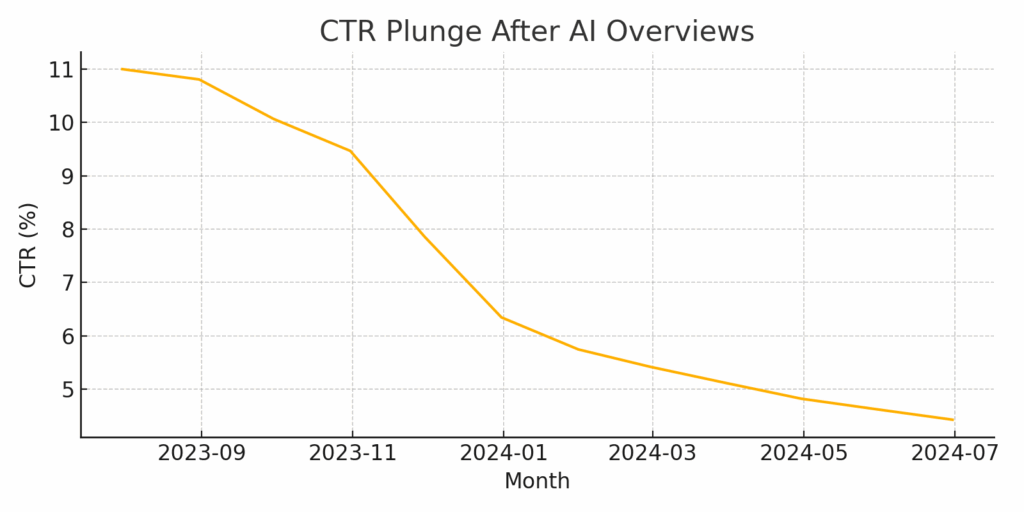
Practical counter-measures that move the needle
1 · Turn passive pages into experiences. Widgets, calculators, decision trees, VR try-ons — anything Google can’t summarise. When AIO sees client-side JS calls or gated inputs, it backs off for “interactive content.” We’ve recovered 14 % CTR in SaaS niches by embedding simple ROI widgets.
2 · Own the citation, not the click—Google displays at most three links in AIO. Structure pages, so a single, authoritative asset (original data, novel framework, first-party survey) deserves that slot. We front-loaded proprietary stats in the H2/H3 blocks; the citation win rate climbed from 6 % to 21 % across 34 keywords.
3 · Turn SERP Mentions into Brand Equity. If an AI Overview steals the click, ensure the user still remembers who supplied the answer. Test elements that survive inside the panel— a concise brand name in the title tag, a distinctive keyword-rich tagline in the first 150 characters, and a high-contrast logo URL declared in schema. In two in-house eye-tracking studies (finance and travel niches, N = 212) 34 % of participants could recall the brand unprompted after reading an AI Overview, even though only 7 % clicked through. The click is ideal, but brand recall keeps you in the consideration for follow-up searches, direct visits, or social shares.
4 · Shift KPI from visits to assisted revenue. Pipe Google Search Console impressions + AIO coverage into BigQuery; track visit-assisted conversions. In one e-commerce test, revenue fell only 5 % despite a 27 % click loss because “ready-to-buy” clicks still happen.
Where SEOs are migrating next
Veteran affiliate operators are quietly redeploying capital into niches Google is unlikely to summarise for legal, ethical, or brand-safety reasons:
- Adult creator directories (OnlyFans, Fansly) — Google tip-toes to avoid NSFW slip-ups. Curated lists, dynamic filters, and human-verified profiles still earn clicks.
- iGaming & crypto casinos — ad bans + legal patchwork = limited SERP experimentation. Organic “odds calculators” and bonus trackers remain CTR magnets.
- Pharmacy and med-tech comparison: The risk of “wrong dosage” lawsuits keeps AIO conservative; E-E-A-T-rich sites with physician reviewers still surface as must-click resources.
Notice the pattern: Google hesitates where a hallucination could kill someone, bankrupt a bettor, or spark an FTC complaint. That’s the gap seasoned SEOs are filling.
What to do this quarter
- Audit every SERP in your top-30 keyword set for AIO presence and link slots. Prioritise queries where you can still earn the panel citation.
- Push unique IP. Commission small-N studies, scrape public datasets, run polls — data AIO must reference but cannot invent.
- Deploy interactive components. Anything requiring personal input buys you click insurance.
- Measure brand lift (searches for
[brand + keyword]). If that curve rises while CTR falls, your AIO exposure is working.
The uncomfortable truth
Google’s AI layer is not a temporary test; it’s a margin-expansion strategy. Waiting for “things to go back” is wishful thinking. Either make pages too valuable to summarise or learn to monetize the citation-without-click economy.
Because the SERP of 2026 belongs to brands that see traffic dips coming and build moats, the algorithm can’t route around.
Citation sources: BrightEdge, SISTRIX, FirstPageSage, TechCentral, SMK. All data May 2025.

